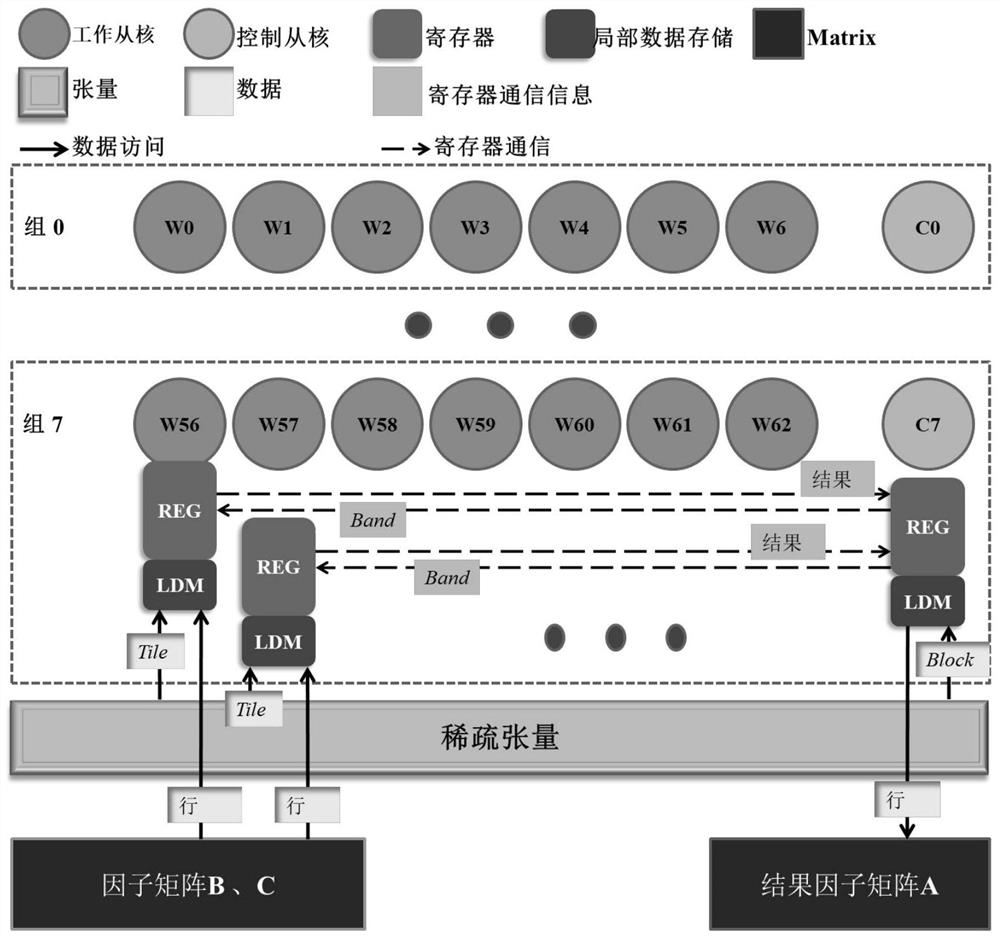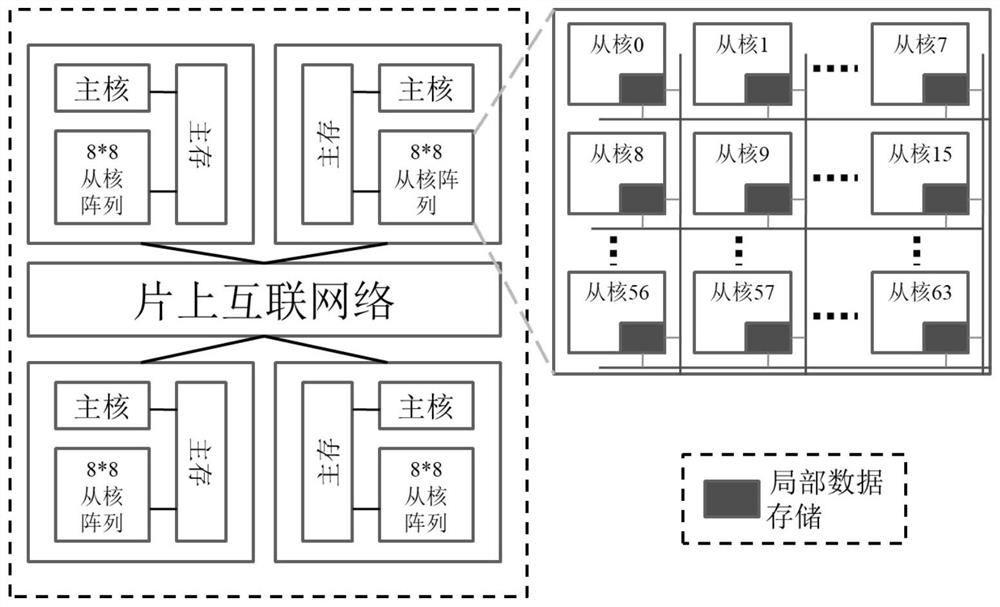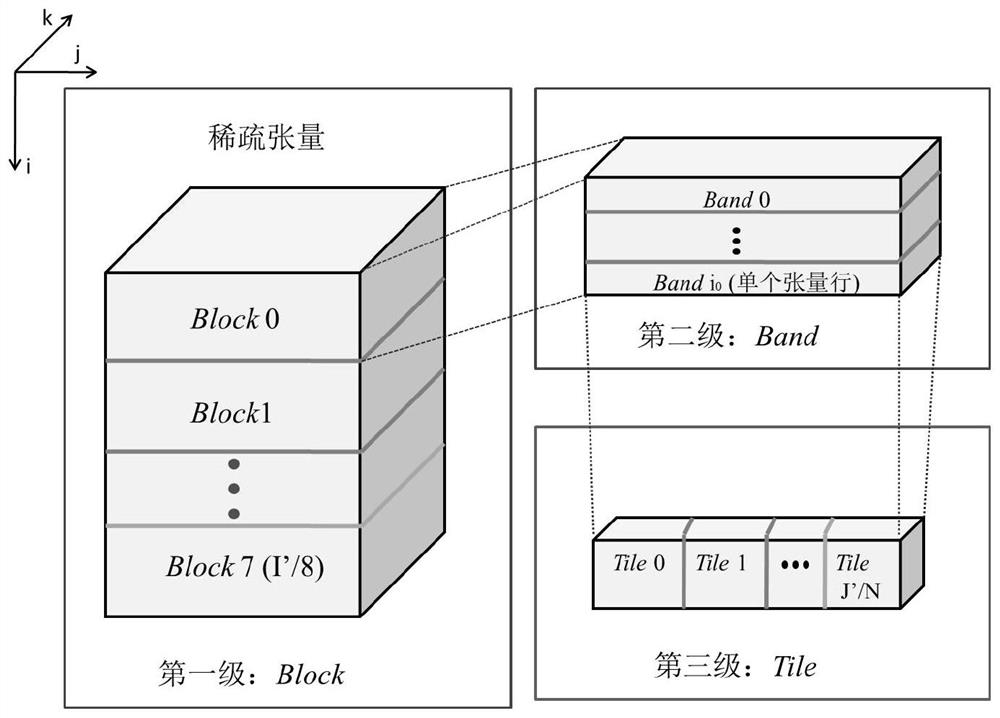Sparse tensor canonical decomposition method based on data division and calculation distribution
A technology of data division and sparseness, which is applied to digital computer components, calculations, computers, etc., can solve the problems of single tensor canonical decomposition algorithm and no CPD algorithm, so as to improve data parallelism, avoid load imbalance, and reduce The effect of memory access latency
- Summary
- Abstract
- Description
- Claims
- Application Information
AI Technical Summary
Problems solved by technology
Method used
Image
Examples
Embodiment Construction
[0074] In order to make the purpose, technical solution and advantages of the present invention more clear, the present invention will be further described in detail below in conjunction with the accompanying drawings and examples. It should be understood that the specific examples described here are only used to explain the present invention, not to limit the present invention. In addition, the technical features involved in the various embodiments of the present invention described below can be combined with each other as long as they do not constitute a conflict with each other.
[0075] The process diagram of the present invention is as figure 1 As shown, the hardware architecture diagram is shown in figure 2 shown.
[0076] Such as figure 1 Shown: the concrete implementation steps of the present invention are as follows:
[0077] Step 1: Read the sparse tensor data specified by the user into the main memory of the core group, and according to the specified sparse ten...
PUM
 Login to View More
Login to View More Abstract
Description
Claims
Application Information
 Login to View More
Login to View More - R&D
- Intellectual Property
- Life Sciences
- Materials
- Tech Scout
- Unparalleled Data Quality
- Higher Quality Content
- 60% Fewer Hallucinations
Browse by: Latest US Patents, China's latest patents, Technical Efficacy Thesaurus, Application Domain, Technology Topic, Popular Technical Reports.
© 2025 PatSnap. All rights reserved.Legal|Privacy policy|Modern Slavery Act Transparency Statement|Sitemap|About US| Contact US: help@patsnap.com



